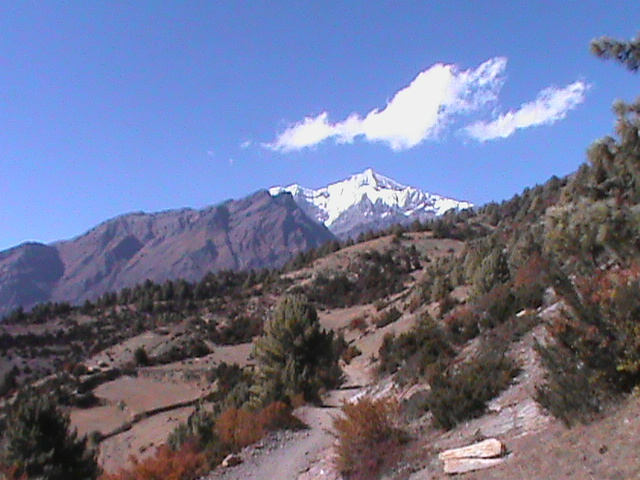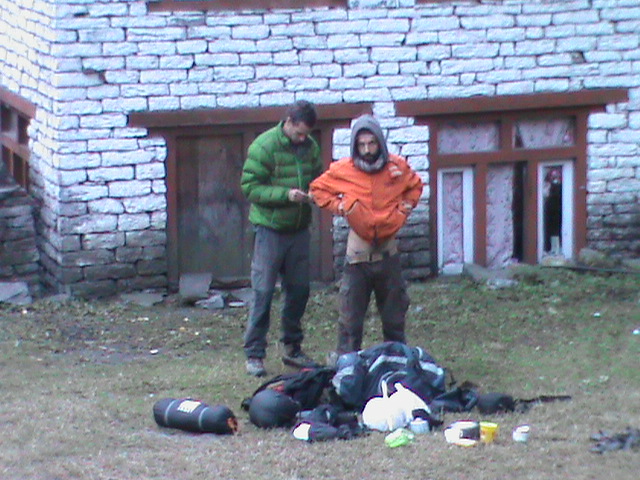I had originally submitted this article to Zen Treks and had made an agreement to do some work for them. However, I sent them a note to clarify what they expected from me and never heard anything back. Whether or not this actually got published on their site or not, I do not know, but its my work so I am putting it here, where it may actually get read.
One in five trekkers experiences it to one degree or another. It can even be fatal, yet many trekking companies do nothing to warn their customers about it, so I am happy to write about this very serious subject. Rather than recant lists that you really must read, this article will help you to be more aware of altitude sickness and hopefully motivate you to do your due diligence. I also have a few tips of my own you will want to keep in mind.
The most important thing to keep in mind is to honor your own personal body. No one knows it better than you do, but do you really love and support your body? We’ve all felt ill while in the middle of something that we felt we could not abandon. We call it ‘pushing ourselves’ and it usually works pretty well. Actually, isn’t that why you want to go trekking, to push yourself to the limit? But when it comes to altitude sickness you may not, you cannot push yourself. It could be fatal to try.

What is actually going on in your body at high altitudes? The capillaries in the body dilate and leak fluid with the reduction in oxygen. Altitude sickness isn’t something you can ignore and ‘push yourself’ through. No, your precious body is not able to overcome what altitude sickness brings. Why? We need one thing on this planet more than anything else. That one thing is oxygen and there just isn’t much of that up in the mountains at 3,000 meters in elevation. That is all you need to remember, the need for oxygen is the most crucial thing on the planet.

How are your lungs? Do you have a lung condition such as asthma? Do you smoke and disregard them in other ways? How is your heart? Does heart disease run in your family? Do you live at sea level? Have you been an ‘eggs and bacon’ kind of person with a love for butter and cheese? Really take inventory on your own, personal, human body. Seriously, even 20 year old trekkers have come into trouble over altitude sickness. And, yes, people do die from it. It can also make you more susceptible to accidents, and no one is immune.
If you go on a group trek you may feel peer pressure to go on when your body tells you it’s time to stop. You can read all the lists and blog posts you want, and I am including a few with this article, but it has to start with this: Go with people in your own age bracket and skill level. As an older American, a woman of short stature in my late 50’s, I went trekking with two Dutch women around my age, but were 6-8 inches taller than me. Dutch? Oh my god! these people ride their bicycles in the snow! Americans get into their car and push the remote garage door button to get to work. Well, they schooled me. By the time I caught up with the group they had rested long enough to want to go on. Do not allow anyone to make you feel like you have to keep up with them. Stay focused on your body and allow it to speak to you; listen to it.
The altitude sickness lists are not rules. Keep in mind that your body is unique in how it will deal with this issue. When a thought comes to you that you had never noticed something about yourself before, it is likely that it is the beginnings of altitude sickness. It might even be something that wasn’t on any of the lists. Tell someone. Stop and drink water-a lot of water. Dehydration will actually make the symptoms worse. One blog post listed below suggested a very strong correlation between altitude sickness and dehydration as if the two go together. I like the author’s idea to monitor urination to be at least every two to three hours.
Before you go on the trek have a discussion with your trekking group and guide. If one person needs to slow down how will it be handled? Note the attitude of the group. The problem can also become an issue when activities are scheduled too closely together. Always allow a few extra days prior to your departure flight. No one wants to be the one to cause the group to miss the next activity, so it is probably best to keep your schedule as free as possible to make adjustments.
 |
| These trekkers are helping each other with back issues. |
Bring envelopes of electrolytes, like you would take after diarrhea. Drink one each day to keep yourself hydrated and healthy. Some of the brands are not very tasty, so try them prior to your trek to make sure you can drink it. One study showed that ibuprofen, or Advil/Motrin can help to keep you symptom free (See link below).
If you decide not to take a porter for yourself, consider hiring someone from one of the villages you will pass through if you feel it will help you. That means you will need to bring a bit of extra cash with you. Contingency planning is key.
I would suggest renting a walking stick in Thamel because one of the symptoms is lack of coordination. Bring healthy snacks for the trip and avoid things that tax your body and can dehydrate you like processed foods, caffeine and alcohol. If you have asthma or another health challenge that makes you a higher risk for altitude sickness issues, don’t let it stop you from coming to Nepal. There are many treks at lower elevations that can be both challenging and rewarding. Additionally, even if you have more severe physical challenges, your quality trekking company can provide alternative transportation so you can enjoy Nepal, too. Nepal has something amazing to show you, regardless of your age or health.
Here are a few links on the subject:
Photos: Complements of Sven Shuster, Germany
About the author: Amanda Summers is an American widow who’s come to Nepal to enjoy her retirement years. Her mission, borne out of her love for this amazing country, is to encourage more Westerners to come to Nepal. Her goal is to help others experience Nepal more fully so each will return and bring friends. Learn more at https://WhatAboutNepal.org
Disclaimer: I am not a medical doctor. These suggestions mentioned above are only suggestions. Please use your own discretion and remember your health is your own responsibility, especially in Nepal.
Did you know I wrote an eBook filled with tips on getting the most out of your visit to Nepal?
Satisfaction Guaranteed: NO FINE PRINT. If you don't truly love Nepal: A Tourist’s Manual, please send for 100% money back. If you are not completely satisfied just send your purchase information along with a note to: FrugalTravelsNepal@gmail.com
Nepal: A Tourist’s Manual-For more information check out our website. If you enjoy this blog and the website you will enjoy the 299 page eBook. It is a well illustrated, easy read with over 1,000 tips to help you get the most out of Nepal.
Visit our Youtube channel







